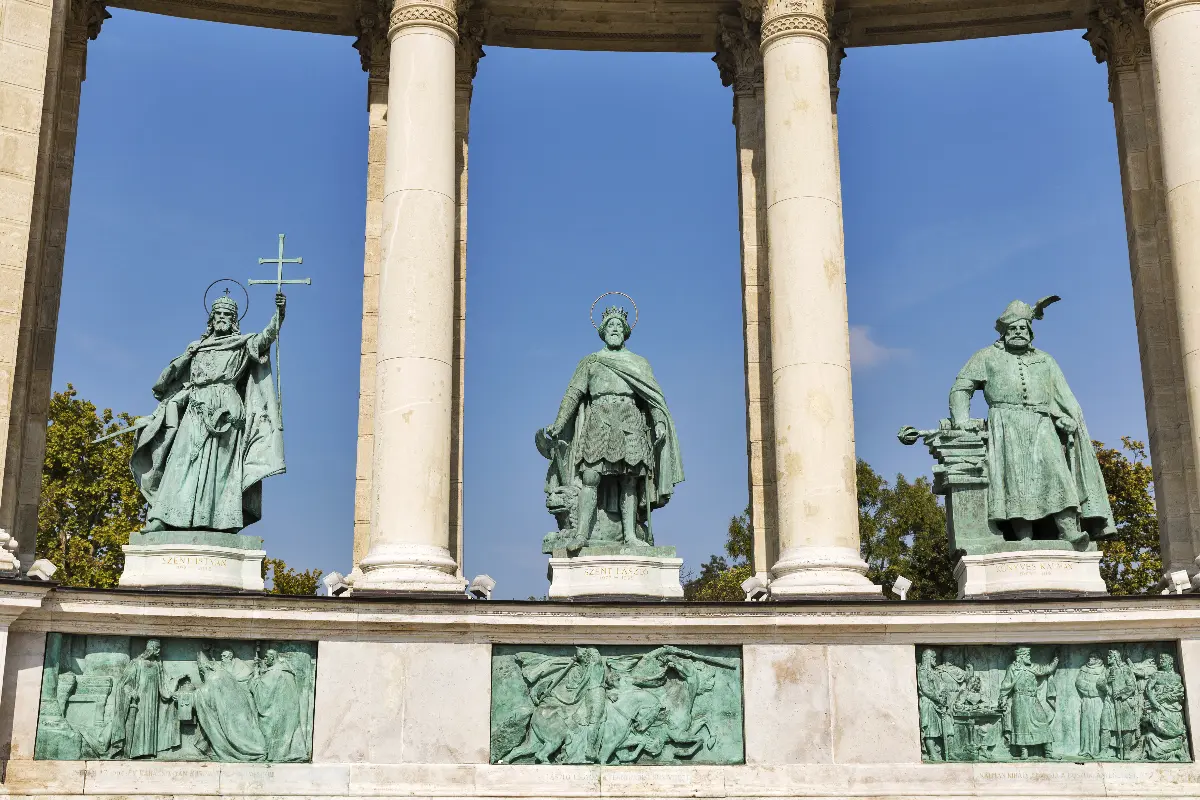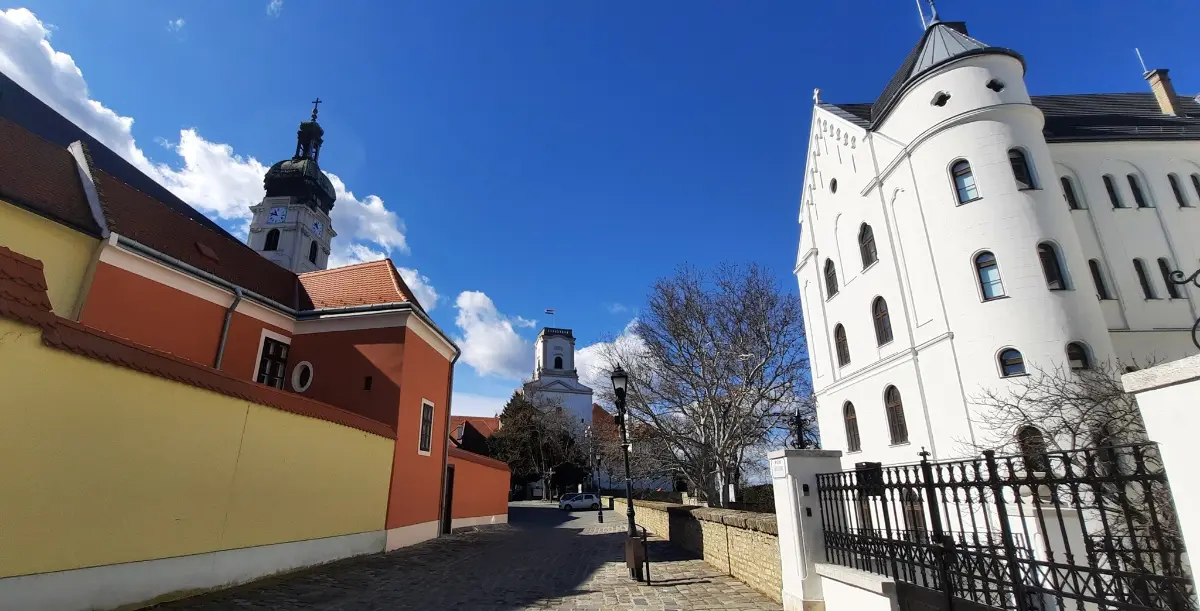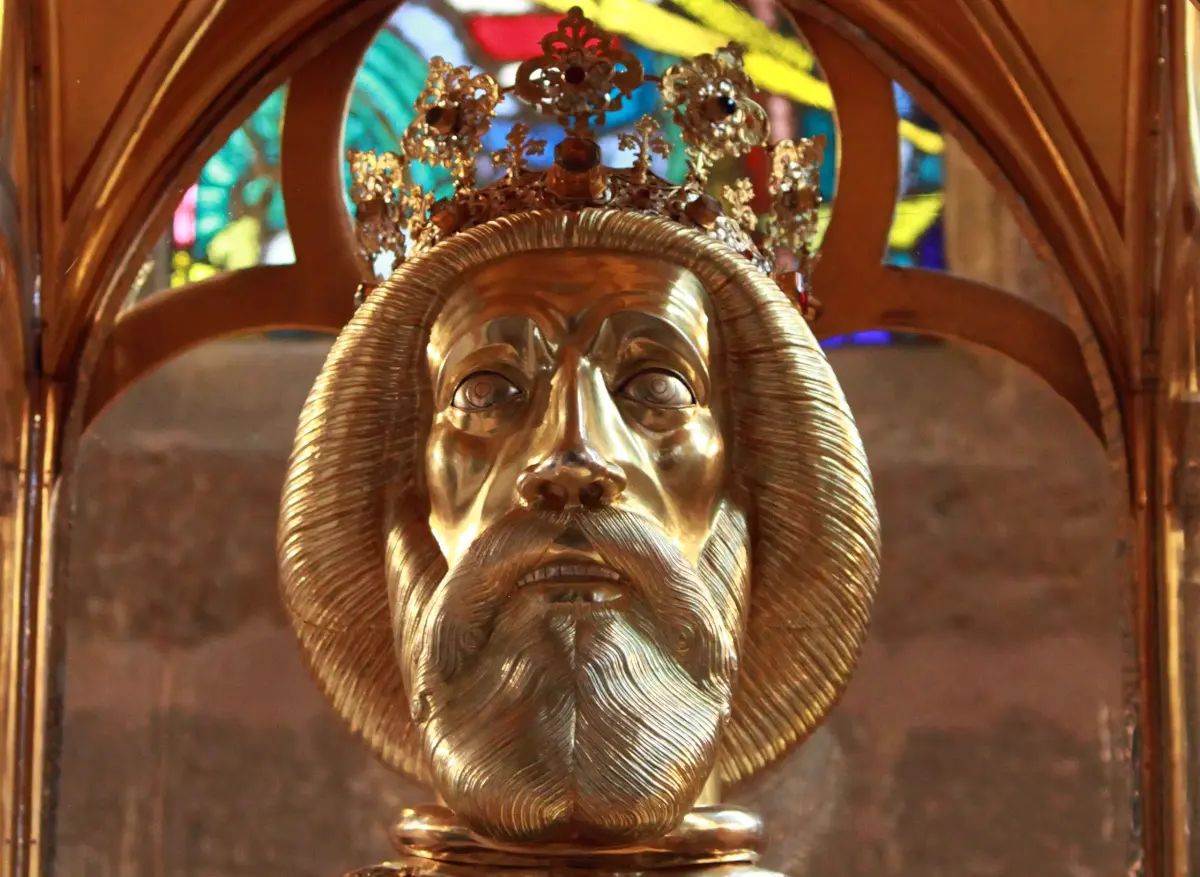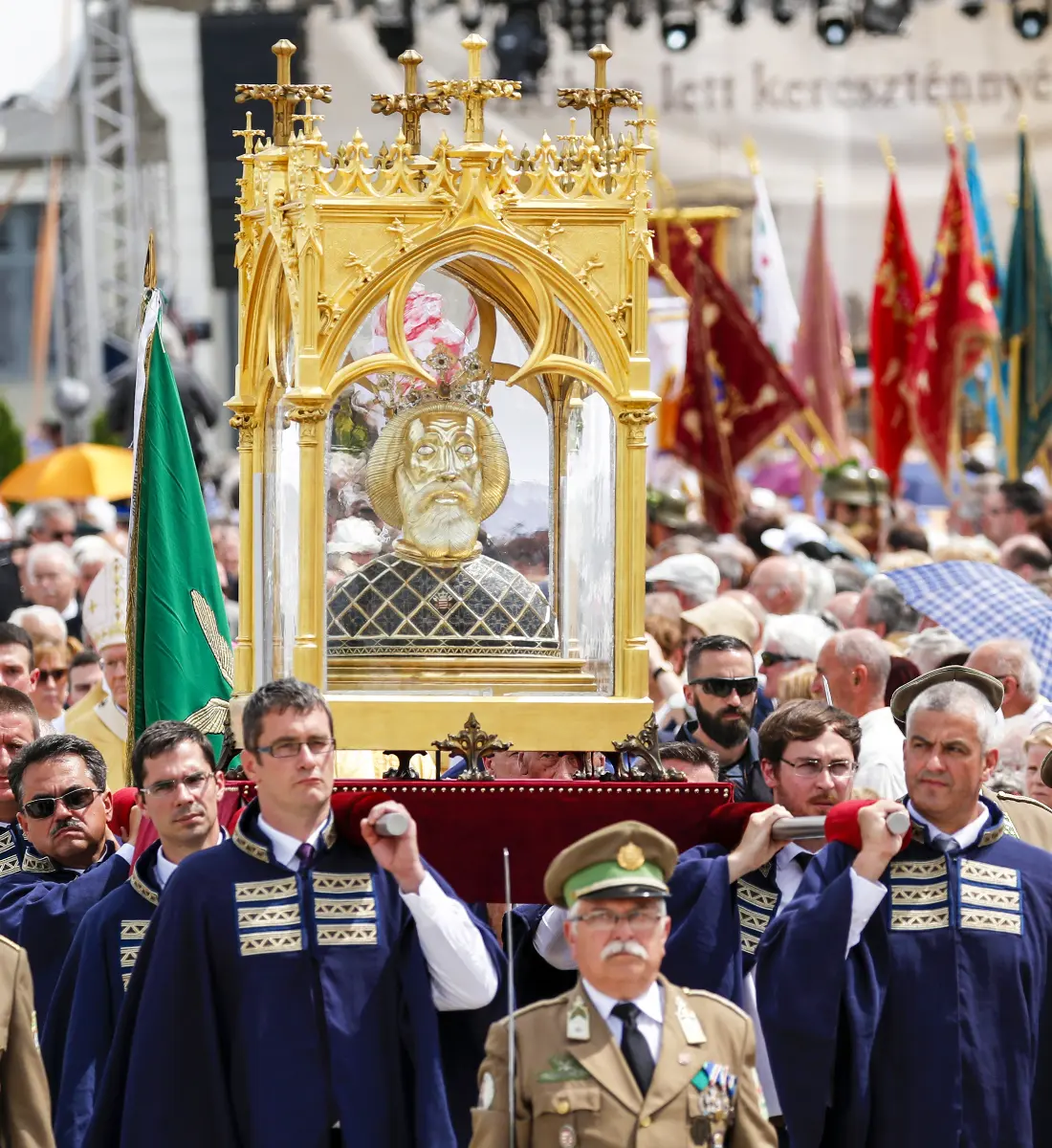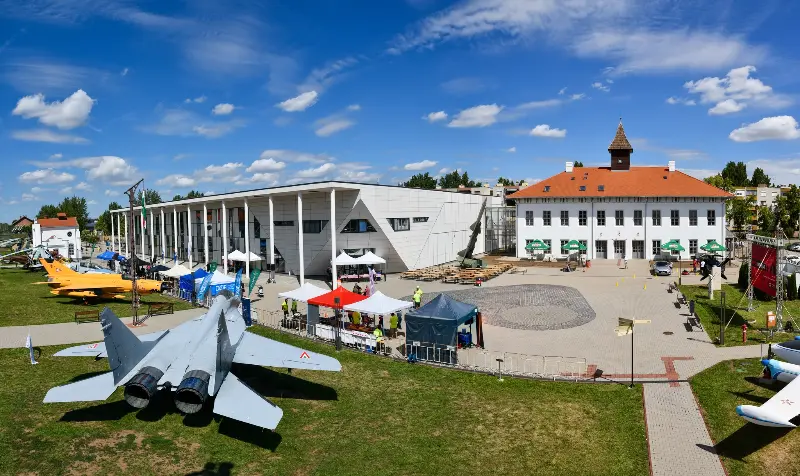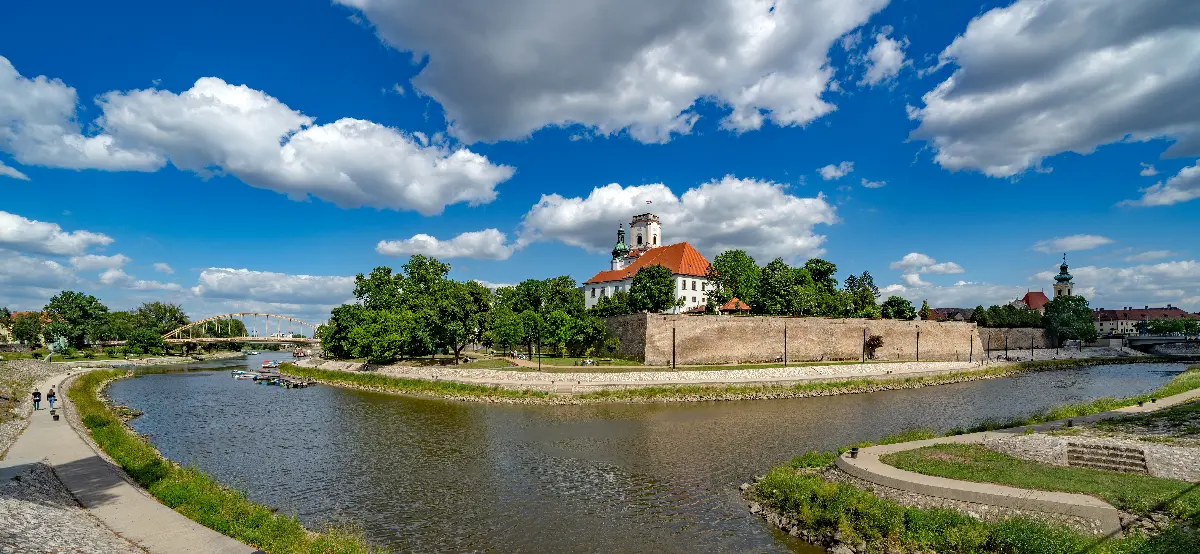
Helyszín címkék:
“God’s athlete” and the herm of Saint Ladislaus in Győr
Bóday Csilla
The visitors’ centre of Győr got its name after Saint Ladislaus, namely Hungarian and Croatian king Ladislaus I, who was referred to by some as “God’s athlete” because of his outstanding physical strength, and by others as the warrior king, as he apparently manifested the ideal contemporary soldier. After the death of prince Géza, both secular and ecclesiastical nobility supported Ladislaus’ ascent to the throne. At the start of his reign, he had to apply draconian austerity measures, as the legacy left to him was falling apart, including poor public safety. It is no coincidence that the reform of the protection of private property is associated with him. According to some narratives, he had himself crowned twice, first with the Greek crown and later with the Hungarian crown when the Hungarian coronation jewels were returned. His name is also associated with the inauguration of the first Hungarian saints - rumour had it that, this motivated him to apply for this title himself.
Szent László Visitors’ Centre
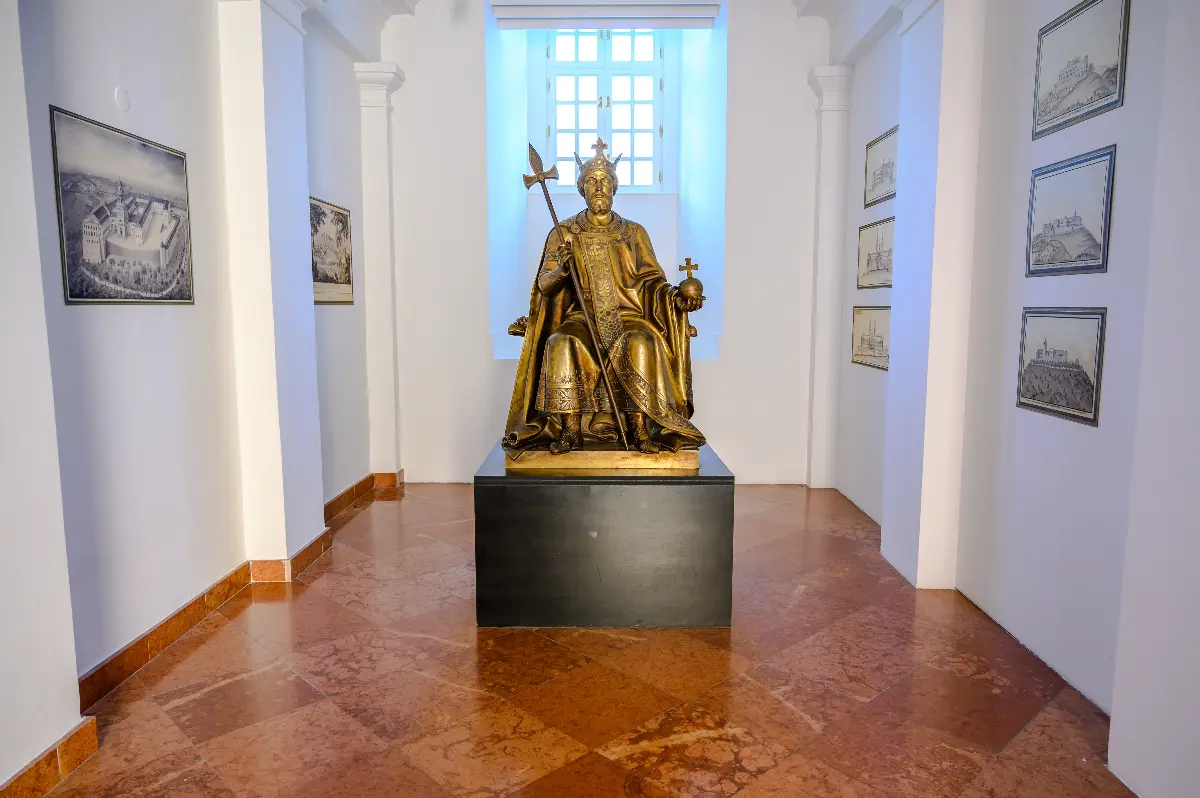
The installations of the Szent László Visitor Centre in the historic centre of Győr await the visitors in several locations, forming a separate, yet integral unit with each other. The displayed buildings and artwork have come down to us through the thousand-year-old sacral-cultural heritage of the Diocese of Győr. Győr is the only city in Hungary where the three most significant national relics - the holy Crown, the Holy Right and the Herm of Saint Ladislaus - have been carried around. Due to the work in the Basilica, the Herm of Saint Ladislaus can be seen in a temporary location in the reception building of the visitors’ centre.
The Herm of Saint Ladislaus
The herm - that is, the head-reliquary - contains a part of the skull of King Saint Ladislaus, and we can safely say that it is the most valuable piece of metalsmithing in Hungary. Our king Saint Ladislaus died in 1905 and was buried in Oradea. In 1192 Pope Celestine III Canonised him. His tomb was then opened, his body placed in the ornate tomb to which he belonged, but his head was placed in a separate reliquary to be the object of religious reverence. There is also a legend related to the honouring of the herm; that there was an earthquake in Győr in 1762 and people turned to Saint Ladislaus for help to save the city. There was hardly any damage, so Bishop Ferenc Zichy ordered that the herm be carried around the city every year. This custom was paused between 1950 and 1989, but since then it has taken place again in a solemn setting. In 2011, the herm and the skull in it were subjected to scientific and technical examinations.
Blessed Apor Vilmos Memorial Exhibition
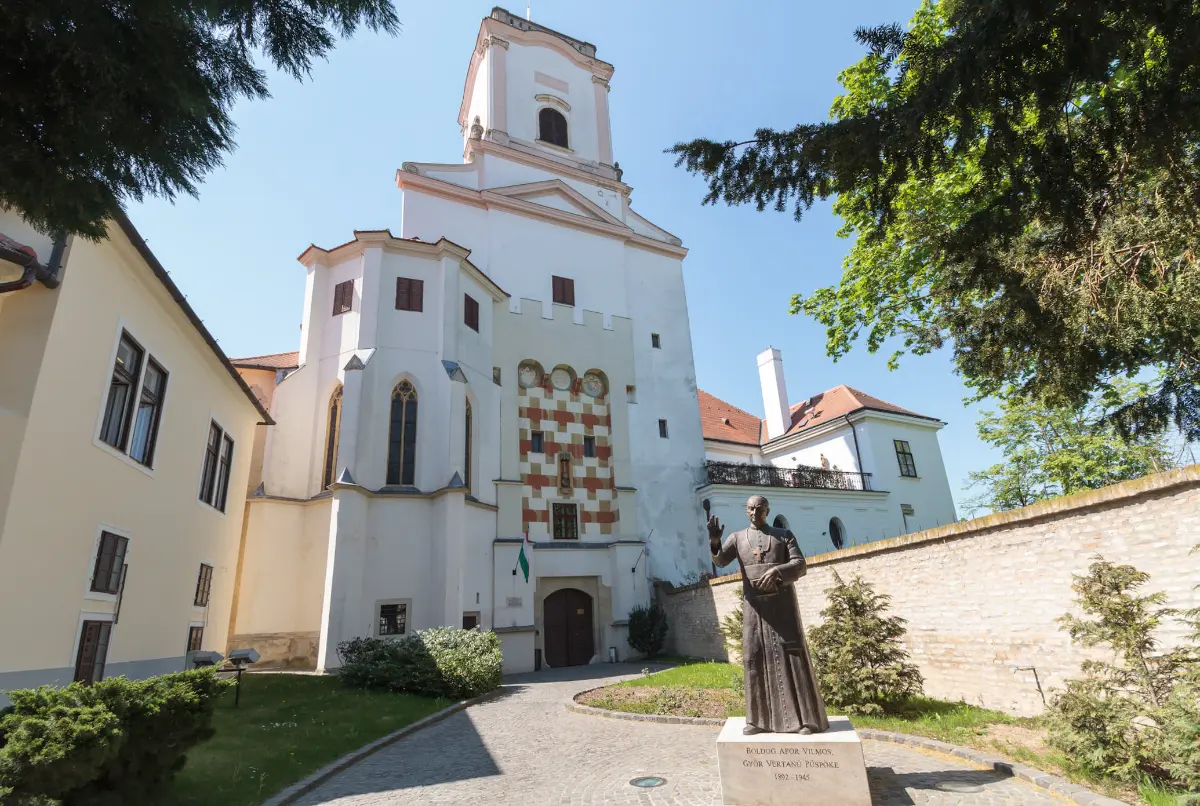
Blessed baron de altorja Apor Vilmos was a bishop, who was the chief pastor of the Diocese of Győr from 1941. In the year of his inauguration as a bishop, he was appointed to be the president of the Hungarian Holy Cross Association, a committee that dealt with the affairs of Jewish citizens converting to the Christian faith throughout the country. The memorial exhibitionis about the martyrdom of the blessed priest, in the place of the hideout created by the former bishop, where he hid women and children during World War II and met his own fate. The exhibition introduces his life, church activities and death with the help of diary excerpts, memorabilia and documents. His sacrificed life is performed to the community through special musical and light effects as well as audio-visual equipment.

